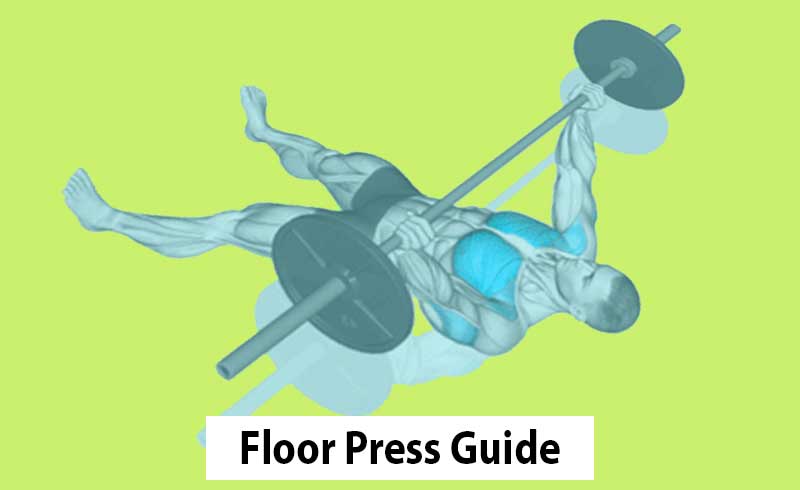Are you struggling to overcome that one challenging point in your bench press? You’re not alone!
There is a powerful supplemental exercise that I learned from the experts, the floor press.
This exercise has been around since the late 90s and early 2000s, and it’s a game-changer for strengthening your bench press exercise.
What Are Floor Presses
The Floor Press is a weightlifting compound exercise designed to target your chest, triceps, and shoulders.
Unlike the bench press, which is performed on a traditional bench, the floor press is executed while lying on the floor.
This variation offers distinct advantages, particularly for individuals seeking variation in their routine or those dealing with shoulder issues because it limits the range of motion, making it a safer choice.
Floor Press Muscles Worked
The floor press is a dynamic exercise that engages several major muscle groups, each playing a crucial role in executing the movement effectively.
Let’s delve into the muscles worked during the floor press and how they contribute to this exercise.
1. Chest Muscles:
While the chest muscles aren’t the primary focus of the floor press, they still contribute significantly to the movement.
The chest muscles come into play during the descent of the barbell, helping stabilize the bar path and gradually decelerating the bar before your elbows make contact with the floor.
To maximize chest activation, consider positioning your elbows directly beneath the barbell.
However, keep in mind that the floor press might not be the most effective exercise for targeting the chest. There are alternative exercises better suited for this purpose.
2. Shoulder Muscles:
The anterior deltoid, which is the front part of your shoulder, takes center stage during the initial drive upward as your elbows lift off the floor.
Shoulder activation can vary based on your arm length. Individuals with longer arms will experience greater shoulder engagement.
To determine if you have long arms, check if their length constitutes 38% or more of your overall height.
If you possess longer arms, be sure to explore strategies tailored to bench pressing with longer arms.
3. Tricep Muscles:
The tricep muscles play a big role when it comes to the floor press, especially during the lockout phase.
Since the floor press narrows the range of motion to emphasize the lockout portion, the triceps are significantly activated.
This makes the exercise exceptionally effective for building tricep muscle mass.
The final extension of the elbow is where the triceps work more, and they gain further activation if you opt for a slight elbow tuck, positioning your elbows ahead of the barbell.
Dumbbell Floor Press Benefits
- Shoulder-Friendly: Unlike the traditional bench press using cables or a barbell that involves a longer range of motion, the Floor Barbell Press reduces strain on your shoulders. This makes it an excellent choice for individuals with shoulder discomfort or those in need of a break from heavy pressing.
- Triceps Emphasis: The Floor Press places more emphasis on your triceps due to the reduced involvement of the leg drive. This targeted stimulation aids in triceps development and strength.
- Promotes Muscle Growth: Using higher reps (8-12) encourages hypertrophy, benefiting muscle mass development, particularly for shoulders and triceps.
- Shoulder Injury Variation: The floor press involves shoulder muscles but limits joint stress due to its reduced range of motion, making it safer for those with shoulder injuries.
- Improved Lockout Strength: The exercise targets the triceps, which can help improve lockout strength in other pressing movements.
- Eliminates Arch and Leg Drive: Unlike the barbell bench press, the floor press removes the arch and leg drive, challenging the upper body more and allowing adaptation with lower weights.
- Increased Stability: Lifting from the floor demands heightened stability, engaging your core and upper body muscles to a greater extent. This stability improvement can have a positive impact on your other lifts as well.
How To Do The Floor Press with Barbell
Now, let’s get into how to perform a floor press effectively.
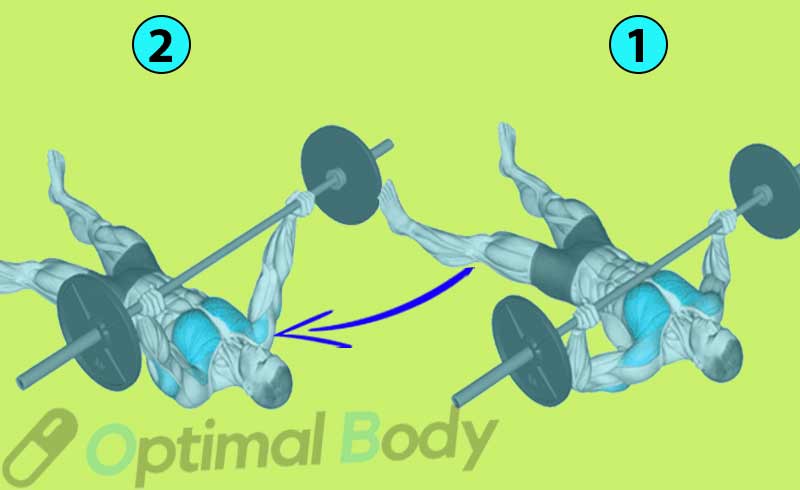
- Lie down on the floor with your body fully extended. Your knees should be straight, and your feet shouldn’t be digging into the ground. This setup is crucial to halt any momentum during the lift.
- Grab the barbell with a regular bench press grip. Take a deep breath and unrack the bar.
- Lower the barbell slowly until your elbows gently touch the ground. It’s essential to break the chain between the lowering and lifting phases to avoid injuring yourself. Remember, we’re not looking for a bar-smashing impact here.
- With the eccentric phase completed, engage your muscles and push the barbell back up overhead.
- Aim for 8-12 reps in total. Focus on maintaining control and proper form throughout the movement.
Keep in mind that the hover point of the barbell might differ depending on your body type.
For individuals with shorter arms and larger chests, the barbell might come close to touching the chest. Others might find that the barbell hovers a few inches above.
Incorporating the Floor Press into Your Routine: Reps, Sets, and Programming:
Ready to give the floor press a shot? Here’s how you can seamlessly integrate it into your routine:
- After your main press movement (like the floor db flye or overhead press), follow it up with the floor press.
- Begin with higher volume, such as five sets of three reps.
- Gradually reduce the volume while increasing the weight. For example, you can progress to three sets of three reps, and eventually a top set of three reps.
- You can even incorporate back-off sets to target different rep ranges.
Frequency: Include it once or twice a week in your upper body training sessions.
Sets and Reps: Start with 3-4 sets of 6-8 reps for strength or 8-12 reps for muscle hypertrophy.
Progressive Overload: Gradually increase the weight to challenge your muscles and promote growth.
The Best Floor Press Variations To Try
1. Dumbbell Floor Presses
The dumbbell floor press is a variation of the bench press on the floor that targets the triceps and chest muscles.
While it primarily engages triceps due to the limited range of motion, chest activation is possible by focusing on pec contraction at the top.
This exercise benefits those aiming for stronger triceps in compound presses and helps bodybuilders build tricep mass.
The floor dumbbell press benefits:
- Chest Growth: It enhances triceps and chest muscle size with higher reps and heavier weights.
- Strength Boost: The shorter range of motion allows for heavier weights, improving upper body strength and aiding full-range exercises like bench press.
- Lockout Improvement: Valuable for strengthening lockout ability, vital in competitive lifting and powerlifting.
- Good for Shoulder: Ideal for those with shoulder injuries, as it targets triceps and chest while minimizing shoulder stress.
How to do floor press with dumbbells:
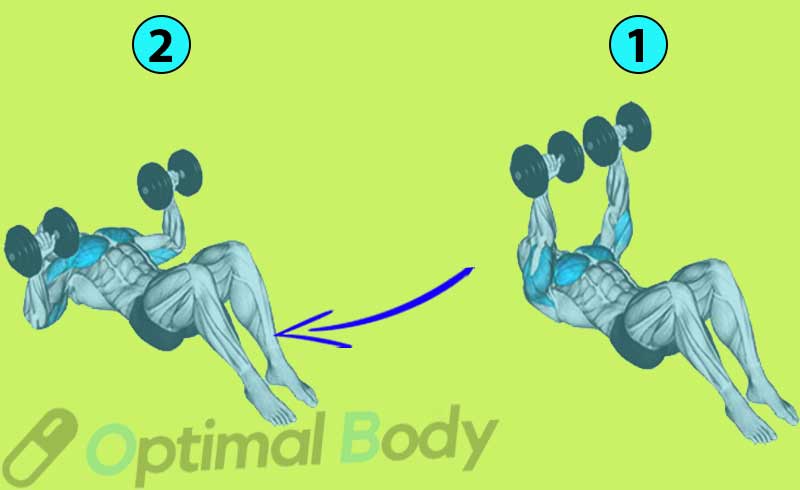
- Sit upright on the floor, legs extended, with dumbbells balanced vertically.
- Hold dumbbells at hip crease with a firm grip.
- Lie back, keeping dumbbells near chest, knees bent at 45 degrees.
- Press weights up, engaging triceps and chest.
- Lower weights until elbows touch floor, then press back up.
- Repeat desired reps.
- Safely lower weights to the ground.
Tips:
- Maintain a slight elbow bend to keep tension in the pecs.
- Tilt weights at 45 degrees to neutralize elbow position.
- Avoid dumbbell collision at the top to prevent shoulder instability.
- Grip dumbbells tightly for better shoulder stability.
- Don’t bounce elbows off the floor at the bottom; it may cause injury.
- Engage abs and prevent excessive lower back arch.
2. Single Arm Dumbbell Floor Press
This variation combines pressing and core work. By pressing one arm at a time, core activation is heightened, and the setup is simpler compared to using two dumbbells.
Straight legs enhance triceps and core involvement, with leg proximity intensifying the challenge.
One-arm floor dumbbell press benefits:
This variation enhances core engagement as the movement challenges your balance due to the offset load.
It also simplifies setup compared to using two dumbbells.
How to do single-arm floor press effectively:
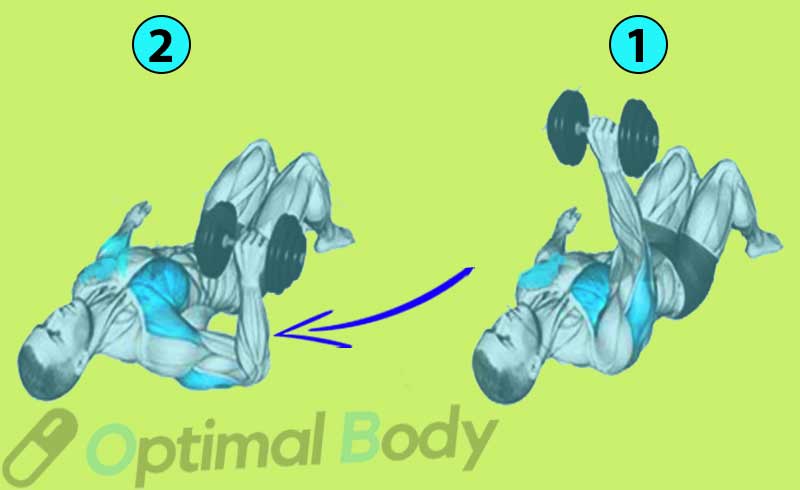
- Lie on your back on the floor or a mat.
- Hold a dumbbell in your right hand at shoulder level, with your elbow bent and your palm facing in.
- Keep your left arm by your side.
- Press the dumbbell upward, extending your arm fully.
- Lower it back down with control.
- Alternate arms.
Exercise Tips:
- Engage your core to stabilize your body.
- Start with a weight that challenges you but allows for proper form.
3. The Swiss Bar Floor Press:
The Swiss Bar, also known as the “Multi-Grip Bar,” “Neutral Grip Bar,” or “Football Bar” all refer to the same type of barbell.
Its defining feature is the neutral grip position, where palms face each other.
Unlike a standard straight bar with palms facing away, the Swiss Bar allows for a more stable shoulder position during lifting.
Benefits:
- The Swiss bar’s neutral grip externally rotates the shoulders, providing a different angle for pressing.
- It allows for heavier loading compared to dumbbells and provides variety in grip and muscle engagement.
- It enhances the stability of the shoulder joint.
How To Do:
- Lie on your back, holding a Swiss bar with a neutral grip (palms facing each other).
- Press the bar upward until your arms are fully extended.
- Lower the bar back down under control.
- Repeat.
Tips:
- Ensure your shoulders are in a stable position throughout the movement.
- Gradually increase the weight as you become more comfortable.
4. Glute bridge floor press
The glute bridge chest press effectively engages hips and pectorals in a single pressing movement.
Benefits:
- Incorporating a hip bridge increases leg drive, engages the posterior chain, and offers a unique challenge for your lower body and core.
- Suitable for individuals with cervical issues or past shoulder trauma.
How to do floor press with Hip Bridge:
- Start by lying on your back with your knees bent and feet flat on the floor.
- Hold a dumbbell in each hand above your chest.
- Lift your hips off the floor, creating a bridge, while simultaneously pressing the dumbbells upward.
- Lower your hips and the dumbbells back down together.
- Repeat for the desired number of reps and sets.
Tips:
- Squeeze your glutes at the top of the bridge to maximize hip engagement.
- Choose a foot position that targets the desired muscle group (glutes or quads).
5. Dead Bug Floor DB Press:
The Dead Bug Floor Press is a compound exercise that combines the Dead Bug movement with the Floor Presses.
It is a dynamic movement that targets multiple muscle groups simultaneously, including the chest, triceps, and core.
Benefits:
- This variation combines the core stability challenge of the dead bug exercise with the pressing movement.
- It enhances anti-extension core strength and promotes overall stability.
How To Do the deadbug press on the floor:
- Lie on your back with your arms extended above your chest, holding dumbbells.
- As you press one dumbbell up, simultaneously extend the opposite leg straight along the floor.
- Lower the dumbbell and leg back down together and repeat.
Tips:
- Exhale forcefully as you extend the leg and press the dumbbell, engaging your core.
- Focus on maintaining a stable lower back throughout.
6. Resistance Bands Floor Press
Adding resistance bands press can enhance the challenge and provide a different type of resistance compared to traditional weights.
This variation engages your muscles in a unique way, contributing to muscle growth and strength development.
Benefits:
- Targets chest and triceps muscles.
- Adds variable resistance for progressive training.
How to do resistance band Floor Presses:
- Anchor a resistance band securely to a stable point behind you or put it under your back.
- Lie flat on your back on the floor.
- Hold the resistance bands’ handles with palms facing away from you.
- Bend your elbows and keep them close to your sides.
- Press the handles upward, extending your arms.
Tips:
- Ensure the band is securely anchored.
- Maintain proper form throughout the movement.
- Adjust the band tension to match your strength level.
7. Barbell One Arm Floor Press
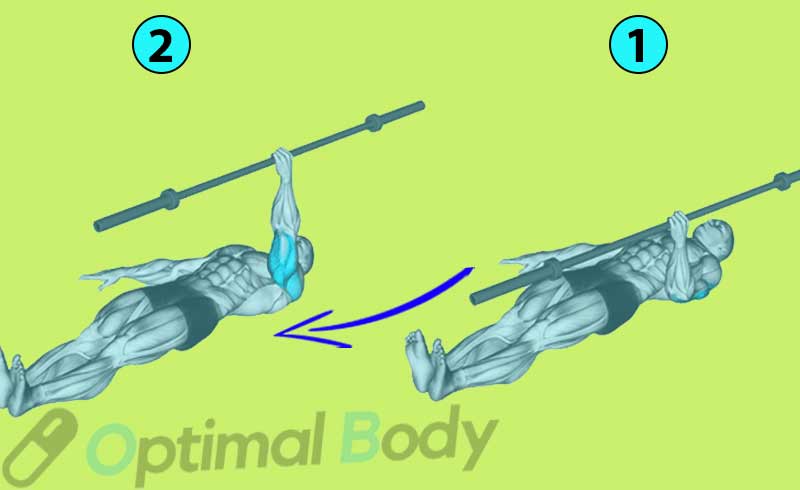
Floor Press Alternatives
1. Landmine Floor Press
The Landmine Floor Press is a strength training exercise that involves using a barbell attached to a landmine attachment.
This alternative specifically utilizes the landmine attachment, which allows for a guided swivel movement.
Benefits:
- The landmine attachment reduces stress on the shoulders and elbows.
- The guided swivel of the barbell allows for enhanced pec activation and potential for heavier loading.
How to landmine press on floor:
- Set up a barbell in a landmine attachment.
- Hold the thick collar of the barbell with an overhand grip.
- Press the barbell upward until your arms are fully extended.
- Lower it back down with control.
Tips:
- Experiment with positioning to find the optimal angle that engages your chest effectively.
- Gradually increase the weight as you become accustomed to the movement.
2. Close Grip Bench Press
The Close Grip Bench Press and Floor Press are similar exercises, it provides a bit more range of motion due to the bench setup.
Equipment needed includes a multi-purpose lifting rack, bench, barbell, and plates.
Advantages:
- Targets triceps and chest muscles.
- Allows for heavier loads due to a shorter range of motion.
How to perform Barbell Close Grip Press
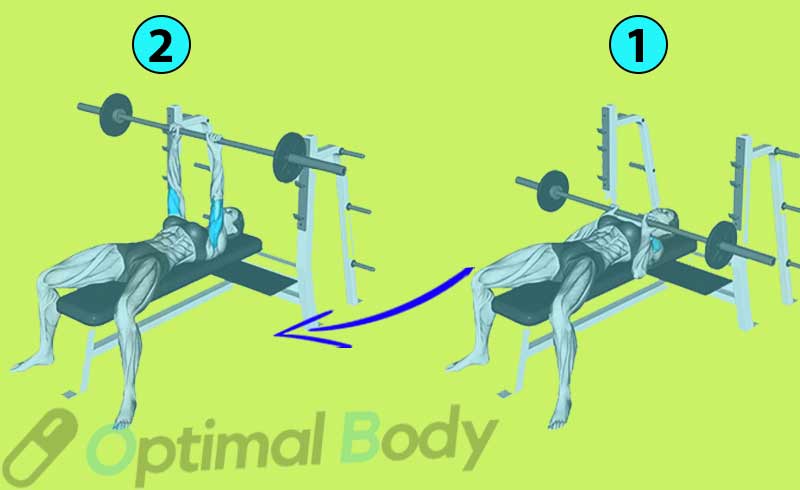
- Set the barbell height on the rack.
- Lie on the bench with feet flat on the floor.
- Keep shoulders retracted, head on the bench, and core tight.
- Take a narrow grip on the barbell.
- Unrack the weight and control the descent.
- Lower the barbell to the chest and press back up.
Tips:
- Keep elbows close to the body to protect the shoulders.
- Avoid flaring out elbows.
- Use a spotter for safety.
3. Neutral Grip Dumbbell Bench Press:
The Neutral Grip Dumbbell Bench Press is another great alternative that targets the triceps, similar to the Narrow Grip Bench but it is done using a pair of dumbbells.
Advantages:
- Targets triceps and chest with dumbbells.
- Enhances shoulder stability.
How to do:
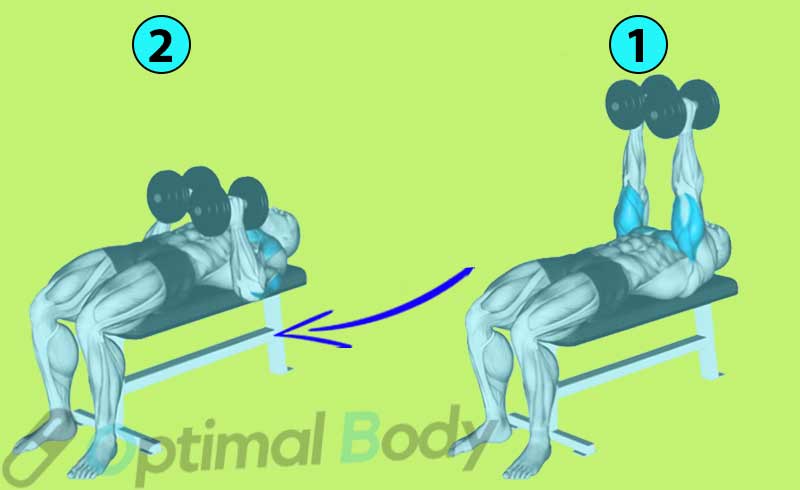
- Sit on bench, hold dumbbells on thighs.
- Lie on flat bench, maintain form, and grip dumbbells.
- Keep feet flat on the floor.
- Retract shoulders, arch back, and press dumbbells.
- Control descent and press back up.
Tips:
- Maintain a neutral wrist position.
- Keep elbows close to your body.
- Use proper bench and dumbbell technique.
4. Dips
Dips are excellent for chest and triceps development. Various dip variations can be alternatives to the Floor Press.
Equipment needed includes a squat rack or dip attachment. Variations include regular Dips, Ring Dips (using gym rings), and Weighted Dips (adding resistance).
Emphasize full range of motion, keep elbows close to the body, and maintain control to avoid swinging.
Advantages:
- Engages chest and triceps.
- Adds variety and challenge to upper body training.
How to do:
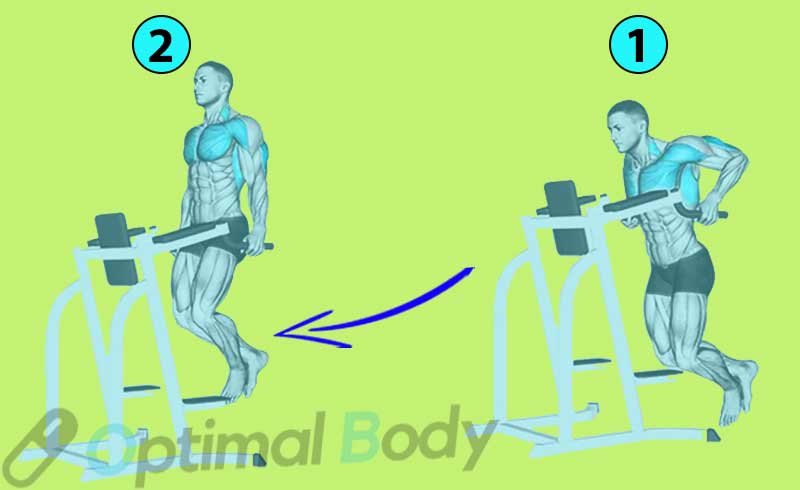
- Use a squat rack or dip attachment.
- Set the rack at waist height.
- Start with hands on bars or rings, knees bent, and feet crossed.
- Lower the body by bending elbows and slightly leaning forward.
- Push back up to the starting position.
Tips:
- Maintain control to avoid swinging.
- Keep elbows close to the body.
- Use variations based on your fitness level.
Wrap Up:
When you start incorporating the floor press into your routine, you might notice something interesting. Initially, you might lift slightly less weight compared to your regular bench press.
But, as you work on overcoming this challenge, you’ll eventually find yourself lifting more weight with the floor press than your max bench press.
That’s a sign of progress and strength gains.
References:
- Schoenfeld, B. J., Grgic, J., Van Every, D. W., & Plotkin, D. L. (2021). Loading Recommendations for Muscle Strength, Hypertrophy, and Local Endurance: A Re-Examination of the Repetition Continuum. Sports (Basel, Switzerland), 9(2), 32. https://doi.org/10.3390/sports9020032
- López-Vivancos, A.; González-Gálvez, N.; Orquín-Castrillón, F.J.; Vale, R.G.d.S.; Marcos-Pardo, P.J. Electromyographic Activity of the Pectoralis Major Muscle during Traditional Bench Press and Other Variants of Pectoral Exercises: A Systematic Review and Meta-Analysis. Appl. Sci. 2023, 13, 5203. https://doi.org/10.3390/app13085203
- Henselmans M, Schoenfeld BJ. The effect of inter-set rest intervals on resistance exercise-induced muscle hypertrophy. Sports Med. 2014 Dec;44(12):1635-43. doi: 10.1007/s40279-014-0228-0. PMID: 25047853.
- Bench Press Calculator - April 22, 2024
- Press to Handstand: Ultimate Step-by-Step Guide - April 22, 2024
- Cable Press (How To Do, Benefits, Targeted Muscles, Alternative) - April 22, 2024

